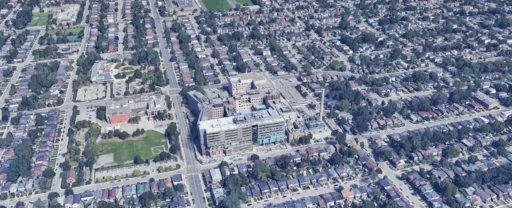Table of Contents
- Introduction
- Defining fall prevalence and risk
- Ontario nursing homes with the highest percentage of residents who fell
- Ontario nursing homes with the lowest percentage of residents who fell
- Considerations for choosing a nursing home
Introduction
Falls can result in serious physical injuries, such as fractures, head trauma, and skin abrasions. These injuries often require hospitalization and can significantly reduce mobility, leading to a decline in overall health and an increased need for intensive care. Recurrent falls can also diminish a senior’s confidence and independence, contributing to a loss of self-esteem and an increased fear of falling.
Beyond the physical consequences, the psychological impact of falls can be profound. Seniors who experience falls may suffer from anxiety, depression, and a loss of dignity. The fear of falling again can lead to social isolation and reduced physical activity, contributing to a further decline in both cognitive and physical functioning.
Defining fall prevalence and risk
Fall prevalence and fall risk are closely interconnected in long-term care settings.
Fall prevalence, the percentage of residents who have fallen within a specific time frame, often reflects the underlying fall risk within a facility.
A higher prevalence suggests that a significant portion of the resident population is at risk, indicating potential gaps in safety measures, environmental modifications, or individualized care plans.
By analyzing fall prevalence data, care providers can identify patterns and address the factors contributing to elevated fall risk, thereby improving preventive strategies and reducing the overall incidence of falls.
Ontario nursing homes with the highest percentage of residents who fell
Below are five top nursing homes with the highest percentage of residents who fell in the 30 days leading up to the date of their quarterly clinical assessment:
- 🥇 Brouillette Manor ranks first at 39.7% for the highest percentage of residents who fell
- 🥈 Twin Oaks of Maryhill ranks second at 39.7% for the highest percentage of residents who fell
- 🥉 Niagara Ina Grafton Gage Village ranks third at 35.9% for the highest percentage of residents who fell
- Bob Rumball Home for the Deaf ranks fourth at 34.6% for the highest percentage of residents who fell
- Extendicare Haliburton ranks fifth at 32.6% for the highest percentage of residents who fell
Ontario nursing homes with the lowest percentage of residents who fell
Below are five top nursing homes with the lowest percentage of residents who fell in the 30 days leading up to the date of their quarterly clinical assessment:
- 🥇 Ivan Franko Home ranks first at 1.1% for the lowest percentage of residents who fell
- 🥈 Mariann Home ranks second at 4.9% for the lowest percentage of residents who fell
- 🥉 Hellenic Care Toronto ranks third at 5.3% for the lowest percentage of residents who fell
- Bobier Villa ranks fourth at 5.5% for the lowest percentage of residents who fell
- Norwood Nursing Home ranks fifth at 5.8% for the lowest percentage of residents who fell
Considerations for choosing a nursing home
In evaluating a nursing home, it is important to consider the facility’s fall prevention strategies and the effectiveness of these measures.
A lower rate of falls often reflects a facility's commitment to providing a safe environment and individualized care plans that address the specific needs of each resident.
A focus on fall prevention can help ensure a safer and more supportive environment, ultimately promoting the health and well-being of residents.















